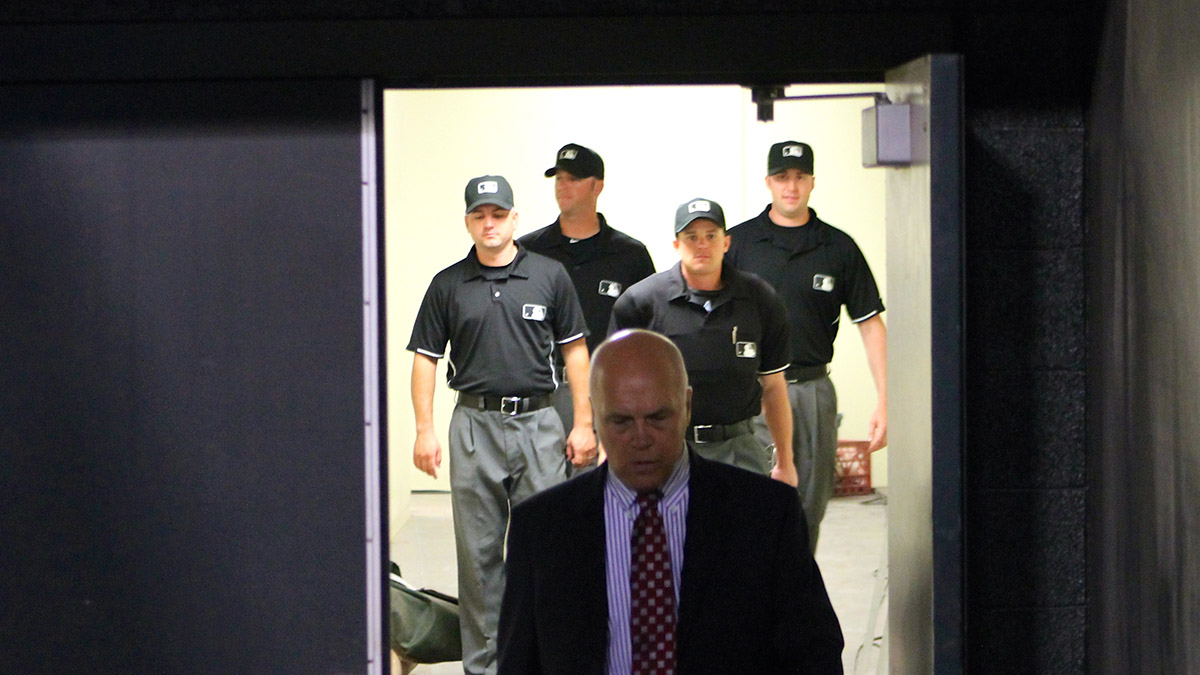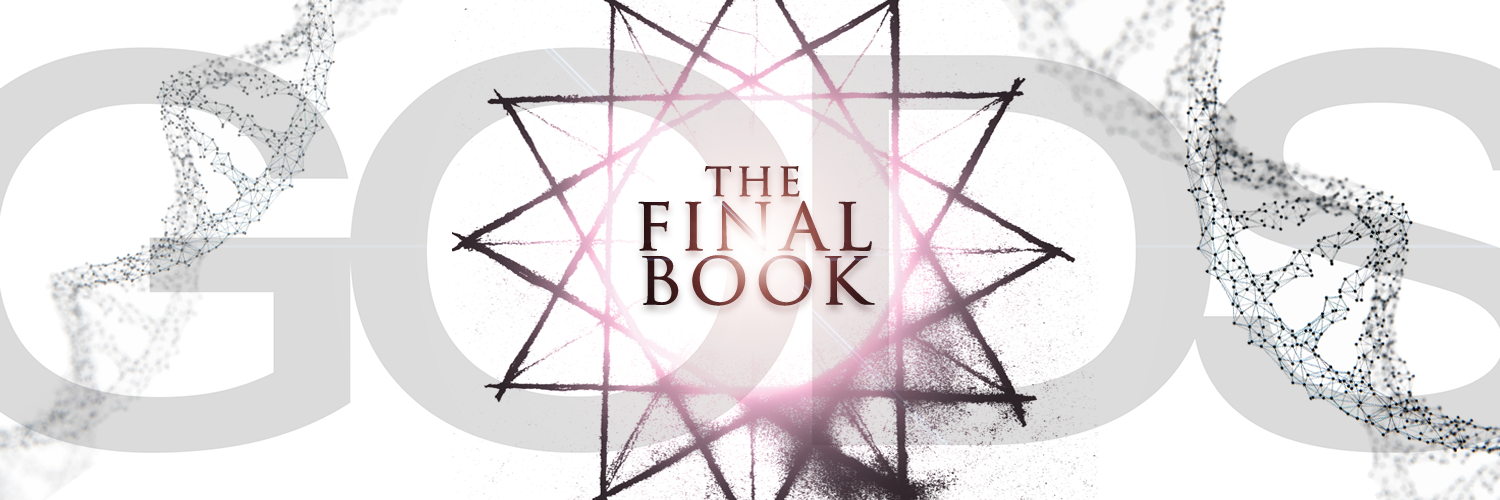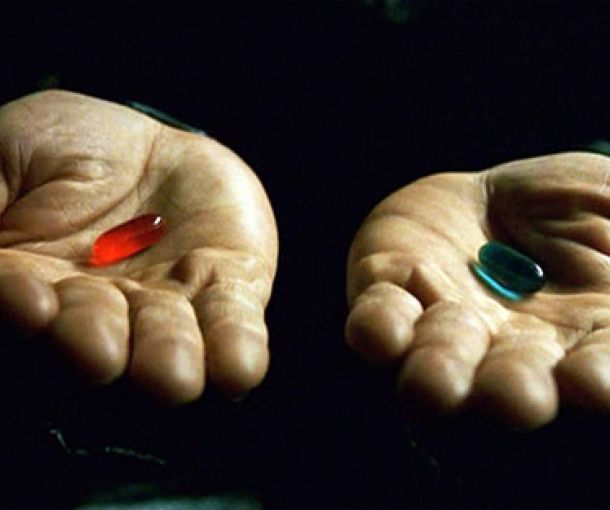
Ideological partisanship is deteriorating our society.
It’s very nature fosters inequality, stunts progression, and detracts from the common good. This poison has completely consumed the Executive and Legislative branches of government, and continues to leech into the Judicial—the people’s single safe-haven that promises unwavering and unbiased justice to all regardless of race, class, creed, or religion. By using big data, we can offer empirical certainty that equal and consistent justice is being served—and if it’s not, the ability to remove its offenders.
I: The Constitution and Why Partisanship Doesn’t Apply
There have been no news articles, no insight offered by academic or legal scholars, no pragmatic solutions that have overwhelmingly demonstrated the value of partisanship. Ever. Nothing of these arguments in support of bias show how the effects of its good outweigh that of its bad—it’s all theory and opinion to convince us that partisanship is necessary. And it’s worked. We willingly accept—celebrate—the pillaging of our democratic system in the name of a political party and even go as far to evangelize it. Simply, partisanship is the business model of 18th century pirates—and your politicians align themselves under the jolly roger that best serves ones own interests. Hamilton, Madison, Jefferson, and Washington fought with more intensity over limiting partisanship than they did against the British—and by one look at today’s government, it’s without question that they have failed.
However, the bastion of salvation from this biased imposition has always been our judicial system. No matter how unpopular a president or how corrupt a senator, our judges were supposed to transcend politics. Their primary function is to be disinterested. Not in the sense that they don’t care, but to solely hold no special interest in the outcome of their rulings—to be explicitly unbiased. So how can we have liberal or conservative judges? Why are judges influenced by popular culture and interpret law through ideological lenses—rather than simply upholding what is written? Why are minority communities stricken with harsher sentences? Why do some people get off with no justice served at all?
The fight of interests and disinterestedness goes back prior to the conception of our Constitution. Federalist, consumed primarily of all of the notable founding fathers, and Anti-Federalist, consisting of less-well-known local and state politicians, struggled to unify and govern a post-revolutionary United States (Wood 2006). Madison’s own accounts as a member of the Virginia Assembly saw that state politics had become nothing but “the endless quibbles, chicaneries, perversions, vexations, and delays of lawyers and demi-lawyers” (Wood 1987: 74) and feared what that would mean for American democracy in the future. Madison continued, “The Virginia legislators seemed so parochial, so illiberal, so small-minded and most of them seemed to have only a [single] interest to serve. They had no regard for public honor or honesty” (Wood 1987: 74).
There is no shortage of outrage the Federalist felt toward biased politics, and Gordon S. Wood encapsulated these sentiments in his essay Interests and Disinterestedness in the Marking of the Constitution; “These legislatures unwilling to “do justice”, only perpetuating their own agenda were “the origin of evil we now feel,” said Washington. The abuses of the state legislatures, said Madison, were “so frequent and so flagrant as to alarm the most stedfast friends of Republicanism” (Wood 1897: 72). Out of this egregious abuse of power, the Constitution was written and passed as a direct retaliation.
Beyond succinctly laying out the foundation of the federal government and personal liberties it affords its citizens, the entire purpose of the Constitution was to protect minorities (the individual) from a rampaging democracy, while at the same time recognizing majority rule (HumanitiesTexas 2012). It’s important to mention that there is nothing in the Constitution that builds bias or partisanship into the document or our system (U.S. Constitution), yet judges have taken it upon themselves to interpret it in such a way—in direct violation of its historical essence and reason for its existence.

While Federalist and Anti-Federalist fought passionately over the future of the country, and subsequent political parties carried on the tradition, judges and legislatures abided by the literal written word of law (HumanitiesTexas 2012). Amendments to the Constitution were made as needed, but for 100 years no party “spun” the document to suit their agenda or cause. In a lecture given at the University of Texas at San Antonio, Wood keys in on a significant moment in American culture that shows the shift in acceptance of blatant partisanship, and also becomes the calling card of many to further promote special interests as if it is their duty: “In the 1890s Progressives began to ‘interpret’ the intent behind the Constitution—this was the same movement that inspired Freud and Marx to “look within for deeper meaning” and go beyond the literal surface of life” (HumanitiesTexas 2012). This shift in academia, and as well in attitude, made it acceptable to ponder what Washington, Jefferson, Hamilton, and Madison “may have intended or meant” when writing the Constitution, and subsequently draft and execute law according to that speculation. Not only is the logic absurd, but the irony is palpable as no interpretation is needed if one actually goes back and reads their work.
The point being, and for a long time now in this country, we haven’t been concerned with facts, literal meaning, or justice—only interpretations of facts, speculation of intent, and whatever best serves our interests. Asking judges to be held to the same standards as our founding fathers seems almost inhuman at this point, and at the very least un-American as it currently stands. But there is a solution. Mankind has a tool readily available at our fingertips that will drastically reduce partisanship among judges and eradicate unfairness in our courtrooms. Big data.
II: Using Sabermetrics As The Foundation For Our Courtrooms
At this point, if your industry isn’t using big data, you’re losing money. You’re not as efficient. You’re missing out on opportunities. You’re not seeing the big picture, or the finest detail. Popularized in 2003 by a book called Moneyball: The Art of Winning an Unfair Game, and later in a movie starring some schlub named Brad Pitt, big data enters the conscious of society through the age-old-tale of a freshly graduated Ivy League intern with a mild personality dysfunction and propensity for stats and spreadsheets (Moneyball 2011). The nerd ultimately transforms a $6 billion dollar a year industry and forever changes a 100 year old game played with wooden bats (Moneyball 2011). Billy Beane, GM of the A’s, brought what Google does to the Internet and used it to take a bottom ranked team, both in money and talent, and elevate it into a playoff contender. The best part is that it wasn’t a fluke—empirical evidence supported the statistics at every turn and the formula only gets better with time.
Big data has transformed every sport that has a high level of competition, or more honestly put, where there’s money on the line. GM’s, executives, and scouts are using it to figure out who the best player is for the least amount of money, and fat guys on their couch are using it to set their $1 million dollar fantasy football lineups (Heitner: 2015). The power of stats have changed athletics so drastically that each player on the field wears a GPS microchip to track the speed and trajectory of their movements; the game is calculating bits of data indefinitely beyond the traditional boxscore in hopes of providing an edge in the future and justifying decisions of the past (NFL 2016).

You may be thinking that this is all cute for baseball, but athletics are completely incompatible to a courtroom. Big data has found its unshakable proficiency in medicine, day trading, astronomy, engineering, the military—the uses are endless because it is unbiased data that allows someone to make the best decision possible while being provided with the most knowable information. What separates the courtroom from each of the examples I’ve given, is that the courtroom is not trying to predict the future—and quantifying the past and present is where big data truly shines.
III: A Judicial Point System For Crimes Committed
C’mon, computers deciding our prison fate? No. But they can help. The Herald Tribune, a small independent newspaper in Florida, conducted a fantastic investigative piece entitled Florida’s Broken Sentencing System. The article uncovered a sickening feeling within their court system—rampant prejudice (Salman 2016). “Half a century after the civil rights movement, trial judges throughout Florida sentence blacks to harsher punishment than whites, they offer blacks few chances to avoid jail or scrub away felonies, and they give blacks more time behind bars—sometimes double the sentences of whites accused of the same crimes under identical circumstances” (Salman 2016). The article continues with an in-depth analysis demonstrating the disparity between blacks and whites, rich and poor, across numerous cases while highlighting particular judge’s they feel are committing unquestionable bias (Salman 2016).
This is not an uncommon complaint coming from minority communities. The Los Angeles court system was an undeniable offender all the way through the 1990s; New York City, Chicago, and the countless high profile cases that have made their way into the news in recent years. To truly know if these complaints are founded on a mass scale, an earnest data collective needs to ensue. The information exists, it just needs to be quantified. However, knowing is only half of the coin. I’m more interested in ensuring justice—not getting rid of our current court system—and improving it by the best means available to us. To use technology as a tool, as we do in every other advanced field in the world, to help us arrive at important and critical decisions. Big data offers us the ability to create an empirical foundation for the court system and ensure fair and equal sentencing across the board by removing mass prejudice and eliminating individual cases from falling through the cracks.
Take a hypothetical walk with me—a judicial point system. If equal and consistent justice is our primary concern; numbers are instrumental in presenting a case. While a point system is not a new idea, data collection and quantification software (think Watson) has never been more advanced. Also, we’re going to take this point system one step further, and most importantly, use it to monitor the performance of judges.
First, I’m merely trying to provide a model of operation—don’t get bogged down in specifics. All point values, weights, and terms of sentences will be decided and standardized by judicial committees and think tanks. They’ll start with current laws and typical sentences that particular crimes receive. These committees would determine the appropriate weight of points and consistent sentences based on individual particulars. It may take them a while to agree upon everything, but once they do these parameters form the foundation. From then on, point values and point weight cannot be amended by officers, district attorneys, or judges. Think of the point system as an academic GPA or an overall player ranking in fantasy football—those scores are based on a collection of data, and then that data is weighted according to relevancy. The cumulative number it spits out in the end would be matched or tiered with an appropriate recommended sentence. Here’s how a crime would look:
Say a suspect is accused and these are the charges—breaking and entering: 2 points. While there, he commits a robbery: 5 points. Value of items stolen—$10M in gold bullion, 15 points. He assaults a victim, non-life threatening: 10 points. He uses a gun: 25 points. He leads police on a high speed chase: 15 points. He shoots at officers: 35 points. Now add up all of the points: 107 points.
Next case—the suspect mugs someone on a train: 5 points. Value of items stolen: 2 points. He uses a knife, but does not harm: 10 points. Add up all of the points: 17 total points.

The suspect charged of the mugging receives a recommended sentence of 6 months based on the algorithm, the suspect charged in the shootout receives a recommended sentence of 25 years. A suspect can be charged with an indefinite number of X’s, or crimes, which are then added up to determine Y, the sentence—and an appropriate multiplier can be attached to Y for repeat offenders. At this point in the case any subjective particulars, motives, or reasoning (by the suspect or prosecution) are not considered—they are irrelevant. The point system is as simple as: this is what is being charged, each offense carries a score, and this is the suspect’s total score. Based on the total score, the algorithm recommends the amount of time that the suspect should serve as it relates to the law, along with a calculation of what other current criminals are serving for these same charges.
At this time, the suspect has not been proven guilty of any of these charges or the overall crime. He has not gone to trial yet. He is still presumed innocent and has the opportunity to have his day in court. Just as the system stands now, the prosecution would have to prove that suspect actually committed each of the offenses outlined in his point system breakdown. However, there are no plea bargains. If the suspect does not want to go to trial, he must receive the full recommended sentence provided by the algorithm.
The reason for this is that the plea bargain is one of the most over-used and unregulated forms of bias and inconsistency in the judicial system (Salman 2016). Wealthy, and often white, educated suspects who can afford an attorney often circumvent a trial and opt for fines and community service, where these same deals are not offered or are able to be pursued by minorities (Salman 2016)—something of which there is no standardization or oversight. All a plea bargain does is help the criminal and unburden the courts—yet the people of the state do not receive restitution for the crimes committed against them. This is not justice, but a matter of convenience on part of the state. Alternatively, plea bargains are notoriously offered to those who are well connected; family members within the police force, the famous, those with political influence. All of which does not serve justice or balance their crimes with the people.
The plea bargain has also been used as a negotiation piece by the state to entice lower-level criminals to spill information on bigger fish. Again, this still doesn’t serve justice. While the police force and DA can pat themselves on the back for a big bust, restitution was not made or appropriately served to the lower-level criminal. The case of the “greater good” does not jibe because those pushing for plea bargains use them as a weapon to serve their interests—which is how Florida has ended up with appalling disparages in punishment between blacks and whites. Plea bargains are a subjective vehicle of injustice that has been built into the justice system. They offer an unregulated amount of power and, whether knowingly or not, the state has abused and disproportionately wielded that power.
The purpose of the point system is to standardize crime and remove exploited opportunities of human subjectivity. This is the exact model that allows us to know that Clayton Kershaw is a fantastic pitcher. Not just because we have guru scouts telling us he’s good (or DA’s and judges tossing dice to determine sentences), but because we have a WHIP and ERA to prove it, and with those numbers we can compare him against those that came before him and the rest of the league.
IV: The Future Role of Judges
Don’t worry, the dancing Judge Ito’s aren’t going anywhere. As much as an aging Clint Eastwood wanted you have this unfounded sense of sympathy for baseball scouts in Trouble With The Curve, his fictional character’s profession is alive and well. Just because sabermetrics revolutionized baseball and changed how teams look at players, that doesn’t mean that there has been a giant layoff of scouts—simply, their role have shifted. Scouts still get sunburns from sitting in bleachers, but instead of eating hotdogs and “listening for the pop of the mitt,” they are diligently collecting data. They have become on-field scientists; statisticians and videographers, as well as oracles of mojo and voodoo. The human element will never leave the game of baseball, just as it will never leave the courtroom. However, providing these humans with the best possible tools, and then measuring the success of these humans is only logical—and a sound business practice.
In a world with a point system, the role of the judge isn’t going to change much, they’ll just have technology as an aide. The same principle is true for the umpires in baseball—who are now allowed to use reply to help get calls right. The only arguments in baseball for not allowing umpires to use replay was; 1) it will take too much time, and 2) it removes “purity” and the element of human error from the game. When someone’s life and credibility is on the line in a courtroom, I would hope that we would choose to all the tools at our disposal in an effort to make the right decision. I don’t want any wrong calls or errors in my courtroom. The point system can only help alleviate that.

I also don’t want to tie any hands—judges will continue to have the power to demonstrate compassion or retribution. We will continue to rely on a judge’s ability of being able to decipher between a good person in extenuating circumstances or Charlie Manson’s protégé. The prosecution must prove, as it always has, that the suspect has committed these crimes beyond a reasonable doubt. And while the point system will recommend an appropriate sentence, the judge will always have the discretion to levy the justice they see fit. They will never be required to use the recommended sentence. Increase or decrease the recommended sentence as much as you’d like, dear Judge—but remember, we’re also quantifying you.
And now we’ve come to the most important part of the point system structure. When a suspect enters their personal information for booking—class, race, religion, location, age, etc—all of the demographics that the brilliant minds at the judicial committees and think tanks come up with—this information will circulate alongside the suspect’s cumulative score. This ensures that we empirically know exactly which groups of people are committing what crimes, and are serving an average of what sentences. Also, this metric will follow the judges.
Judges will be attributed their own point system which will track consistency, fairness, and equality. Each case a judge presides over is like an at-bat. Just as you have pitching metrics in baseball, you also have batting metrics—both sides of the ball are being quantified at all times. The judge’s score will show how often the judge increases or decreases the recommended sentence, and by how much, and will also allow him to go on the record to state why. Over time, it will be easy to distinguish any sort of bias a judge may be exhibiting. If whites, or certain people in a particular zip code, are consistently getting reduced sentences, he may be favoring one group over another. Likewise, if a particular demographic is receiving increased sentences, he may be disproportionally punishing them harsher. The purpose being is that there would be no guessing as to whether the judge, knowingly or not, is demonstrating prejudice. And when seeking justice, it is imperative—the single most important part of the entire process—that our judges are being fair, balanced, and consistent.
The argument arises that what if blacks commit more crimes and are therefore in front of the judge more often—wouldn’t this skew his numbers? No. It doesn’t matter how many cases with black suspects the judge presides over, it only matters how often he increases (or decreases) the sentences; the ratio between the relationship of demographics. Any amount of disproportional favoritism will then be shown.
So what happens if you have a biased judge? Well, with the point system, now we can empirically prove it. Judges that a subject to re-election, hopefully won’t get re-elected. There should also be a bar that if exceeded, a judicial committee is required to review the judge. The committee can go back through his cases and read the reasons he gave for not proceeding with the recommended sentences. If, after investigation and review, the committee determines that bias is being committed, the judge should be terminated. There are no sacred cows when it comes to justice.
Conclusion: For It’s One, Two, Three Strikes You’re Out…
Tony Rousmaniere, a psychotherapist, recently underwent a bit of soul searching. He lost a patient he had been treating for drug addiction to a drug overdose. He took it personally, as if there was something more he could have done—should have done (Rousmaniere 2017). Ironically, he too looked to Moneyball as a potential model of improvement. “Most fields have experienced dramatic advancements over the past century. The story of how they moved forward often involved two closely related phenomena, both of which were brought about by technology. The first of these is performance feedback, which gives individuals a heightened awareness of how well or poorly they’re doing their job” (Rousmaniere 2017). Thanks Tony, that’s exactly what I’m proposing of judges.
Our founding fathers were undeniably concerned over bias and special interests perverting the democratic system. The Constitution is purely a document to prevent that—to divide and subdivide power, to check and balance, and to provide a starting place for the law of the land. It’s an eighteenth century, pre-big data solution to ensure equality. As reasonable men of the enlightenment, had big data metrics been available to them, Washington, Jefferson, Madison, and Hamilton would have used it just like any other tool. Why? Because by its very nature, quantitative data is disinterested.

I have no doubt that many of you are thinking the same thing Rousmaniere’s colleagues thought when he started talked about Moneyball; “In my experience talking with peers, the most common reason for non-adoption is the belief that quantitative data—or worse, a computer—cannot possibly capture the nuances of psychotherapy; accordingly, many therapists feel that the whole idea of psychotherapy metrics should be rejected at face value” (Rousmaniere 2017). Replace “psychotherapy” with “law” and every lawyer, DA, and judge are nodding their heads in agreement. The problem is, despite Clint Eastwood’s failing eyesight in Trouble With The Curve, they both have a vested interest in the system remaining the same—it’s working fine for them and they currently have very little accountably. But that’s not to say that they are wrong. “The first part of this argument is correct,” Rousmaniere continues, “a single mental-health measure can’t identify the full range of psychological illnesses any more than a thermometer can detect cancer, diabetes, or heart disease. But that isn’t a good reason to entirely ignore the data—just as the thermometer still provides valuable information even if it isn’t the final word on whether a patient is sick.”
Again, judges still have the final say in sentencing and every case should be handled individually—just as it is now. However, big data provides an overview of what is happening in our judicial system as a whole. It takes the “temperature” of the system. Using metrics could statistically confirm the suspicions and concerns of many—or, at the very least, settle the debate. All of the information exists, it just needs to be quantified.
In addition to getting the overall vibe, it is also within our ability to improve consistency and alleviate pitfalls of human error within justice by using technology. Gathering data would then give judicial committees and think tanks a place to start, and they could use this information to build the structure of a criminal point system that recommends sentences for offenses—crippling bias plea deals. This method of tracking and confirmation could then be used to monitor judges’ performance and determine if they are proportionally levying sentences.
Knowing who gets what, how often, and who it’s given by is imperative in determining if true justice is being served to all people. A point system based on quantitative data would ensure criminals are serving appropriate sentences and judges are distributing them evenly.
Works Cited:
Wood, Gordon S. "The Relevance and Irrelevance of the Founding Fathers." Revolutionary Characters: What Made The Founding Fathers Different. New York: Penguin, 2006. 321. Harvard Law Review. Web. 8 Mar. 2017.
Wood, Gordon S. “Interests and Disinterestedness in the Making of the Constitution.” Beyond Confederation: Origins of the Constitution and American National Identity, edited by Richard Beeman et al., University of North Carolina Press, 1987, pp. 69–110.
HumanitiesTexas. “Gordon Wood, “The Making of the U.S. Constitution,” (San Antonio, June 2012). YouTube, presentation by Gordon S. Wood, 6 Mar. 2013, https:// www.youtube.com/watch?v=NRnOAiCUfMM.
U.S. Constitution.
Moneyball. Dir. Bennett Miller. Perf. Brad Pitt and Johan Hill. Columbia Pictures, 2011. Blu-ray.
Heitner, Darren. "The Hyper Growth Of Daily Fantasy Sports Is Going To Change Our Culture And Our Laws." Forbes. N.p., 16 Sept. 2015. Web. 11 Mar. 2017. https:// www.forbes.com/sites/darrenheitner/2015/09/16/the-hyper-growth-of-daily-fantasy- sports-is-going-to-change-our-culture-and-our-laws/#16d9bd1e5aca.
NFL. "What Is Next Gen Stats?" NFL Next Gen Stats. NFL.com. N.p., n.d. Web. 11 Mar. 2017. http://www.nfl.com/stats/next-gen-stats.
Josh Salman, Emily Le Coz, and Elizabeth Johnson. Graphics and Site Development by Jennifer Borresen and Dak Le. Photos and Video by Dan Wagner. "Florida’s Broken Sentencing System." Herald Tribune. N.p., n.d. Web. 10 Mar. 2017. http:// projects.heraldtribune.com/bias/sentencing/.
Trouble with the Curve. Dir. Robert Lorenz. Perf. Clint Eastwood and Amy Adams. Warner Bros. Pictures. 2012. Blu-ray.
Rousmaniere, Tony. "What Your Therapist Doesn't Know." The Atlantic. Atlantic Media Company, 29 Mar. 2017. Web. 23 Apr. 2017. https://www.theatlantic.com/magazine/archive/ 2017/04/what-your-therapist-doesnt-know/517797/.













